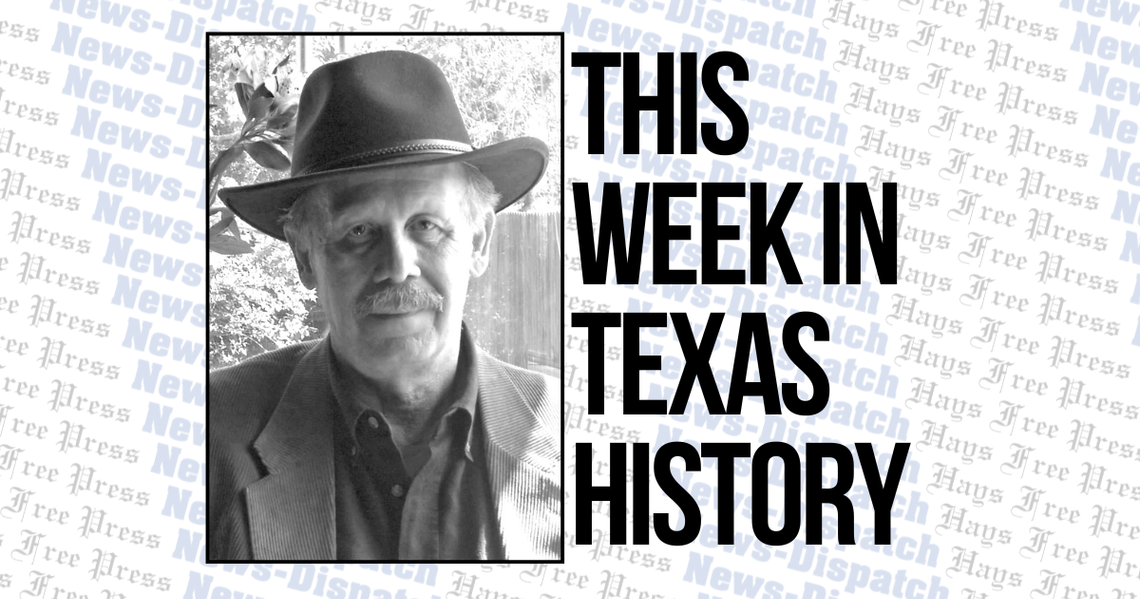Allen Shivers joined Dwight Eisenhower on Oct. 14, 1952, for a wreath-laying ceremony at the Alamo. This unprecedented show of support by the Democratic governor for the Republican presidential nominee crushed any hope Adlai Stevenson had of carrying the Lone Star State.
As early as 1943, in the middle of World War II, both the Democratic and Republican parties approached Gen. Eisenhower about running for the White House. He spurned the suggestion saying that a simple soldier should be left alone to do his duty.
Five years later, party bigwigs were at it again, this time attempting to draft the war hero for the nomination. Once more the overtures met with a cool reception from Ike, who insisted there was no place in politics for professional soldiers.
Then in 1952 Eisenhower did an abrupt about-face. Resigning as commander of the North Atlantic Treaty Alliance, he returned to the States to campaign actively for the GOP nomination that he won on the first ballot.
When Gov. Adlai Stevenson of Illinois was chosen for the top spot on the opposing ticket in July 1952, his Texas counterpart was already a disenchanted Democrat. A conservative critic of the Truman administration, Shivers snorted, “Stevensonism will be Trumanism with a Harvard accent.”
But the governor promised to abide by the verdict of the national convention, if Stevenson stood with Texas on the tidelands issue. In August 1952, he flew to Springfield, Illinois to confront the candidate on the controversial question.
As Shivers patiently explained over lunch, congress balked way back in 1845 at assuming the debts of the Texas Republic as the price of annexation. Exhaustive negotiations produced an historic compromise: Texas would remain responsible for the debts incurred during the decade of independence but would keep her public lands, including ten and a half miles out into the Gulf of Mexico. Of course, no one knew at the time that the offshore claim contained a fabulous fortune in oil.
One hundred and five years later, the U.S. Supreme Court nullified the tidelands clause of the annexation treaty. A sympathetic congress twice passed bills restoring Texas’ right to the tidelands only to have the legislation vetoed by President Harry Truman. Faced with the same situation, Shivers asked, what would Stevenson do?
To his credit, Stevenson candidly confessed he too would veto any act of congress that reversed the high court ruling. At the request of Gov. Shivers, he even put that fateful opinion down on paper.
Shivers solemnly informed the waiting press corps of the disappointing outcome. As a result of his position on the tidelands tempest, the governor declared he could not back Adlai Stevenson for president.
Shivers had hardly unpacked his bags before going on statewide radio to report to the people on his fruitless trip up north. Reiterating his implacable opposition to Stevenson, he stopped short of endorsing the Republican standard bearer.
Speaker of the House Sam Rayburn demanded equal time to rebut the governor and to implore Texans to stick with the Democratic Party as they had done in every presidential election save one since statehood. But Rayburn and Sen. Lyndon Johnson were waging an uphill battle on behalf of the unpopular Stevenson.
While prominent figures organized a “Democrats for Eisenhower” movement, the governor pondered his options. As he later recalled, “I had said I was not going to vote for Stevenson. And if I was not going to vote for him, there was only one person to vote for and that was Eisenhower. And then if I was going to vote for him, I should announce publicly that I would vote for him. And if I was going to vote for him, I might as well support him.”
With the election less than a month away, Shivers put his career on the line by endorsing the Republican: “I will vote for Texas-born Dwight D. Eisenhower for President of the United States.” And to prove his point, the governor appeared alongside the candidate several days later at the Alamo.
Despite frantic appeals from Rayburn and Johnson, a solid majority of Texans refused to vote the traditional straight ticket in November 1952. For only the second time since joining the Union, the Lone Star electorate embraced the presidential nominee of the GOP.
The 1956 election was an instant replay as Gov. Shivers again snubbed Stevenson and again climbed on-board the “I Like Ike” bandwagon. Proving 1952 was no fluke, Eisenhower widened his winning margin to 55 percent of the popular vote in the Lone Star State.
The Eisenhower victories in the 1950’s marked the beginning of the end of one-party politics in Texas. Pariahs since Reconstruction, Republicans soon started to give Democrats a run for their money in local as well as statewide contests.
“Texas Entertainers: Lone Stars in Profile” is full of talented Texans who deserve a curtain call. Order your autographed copy by mailing a check for $24.00 to Bartee Haile, P.O. Box 130011, Spring, TX 77393.










